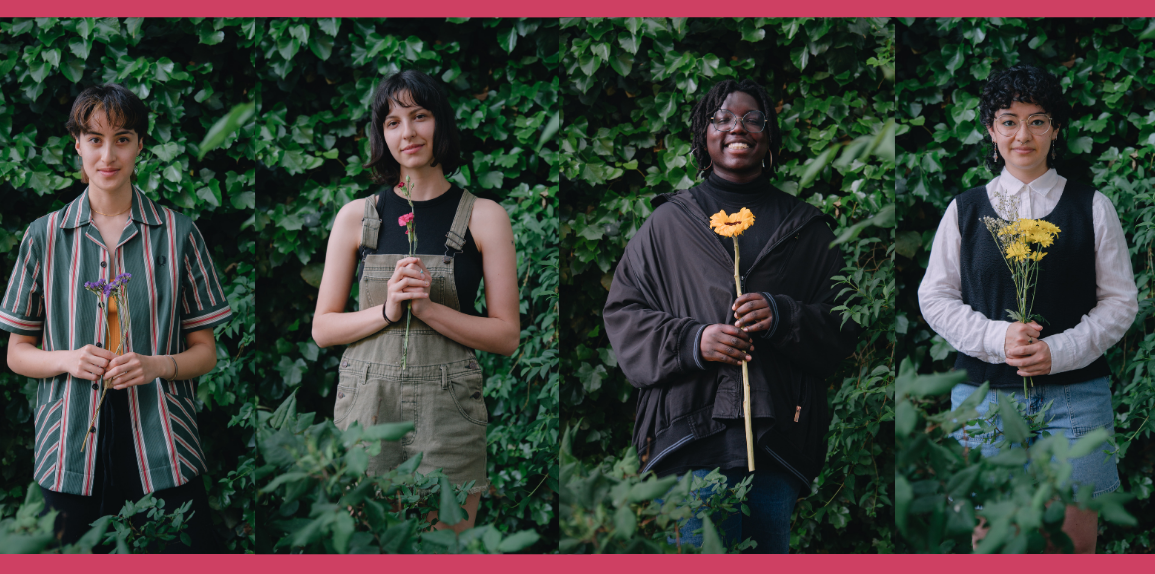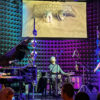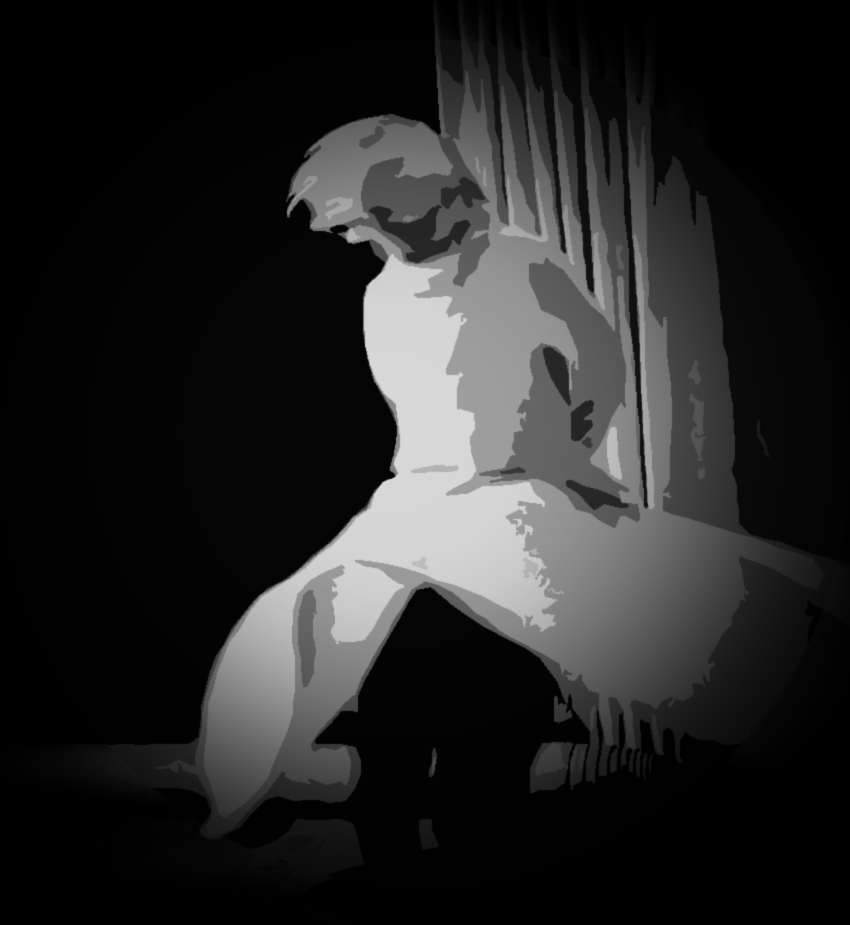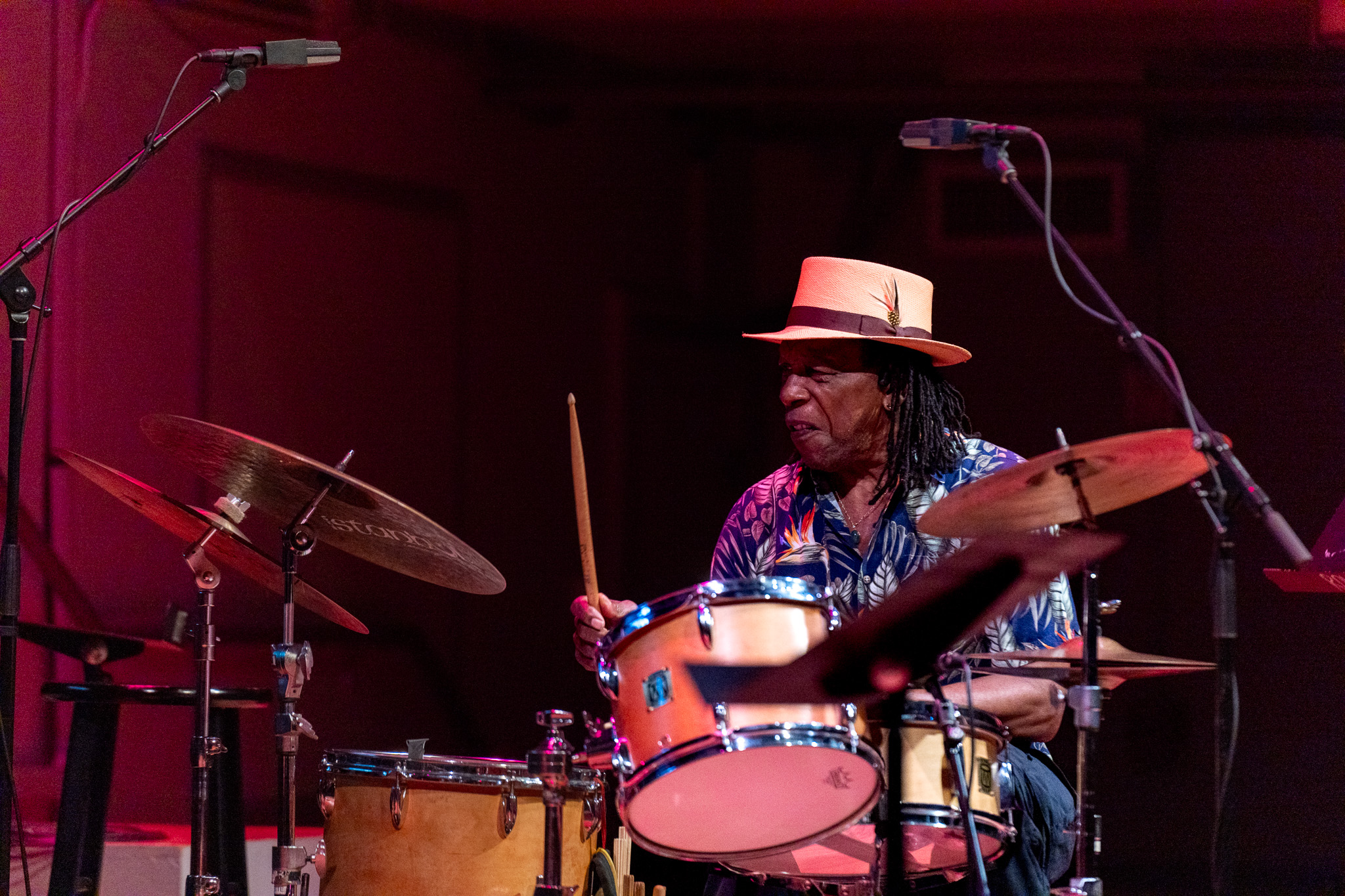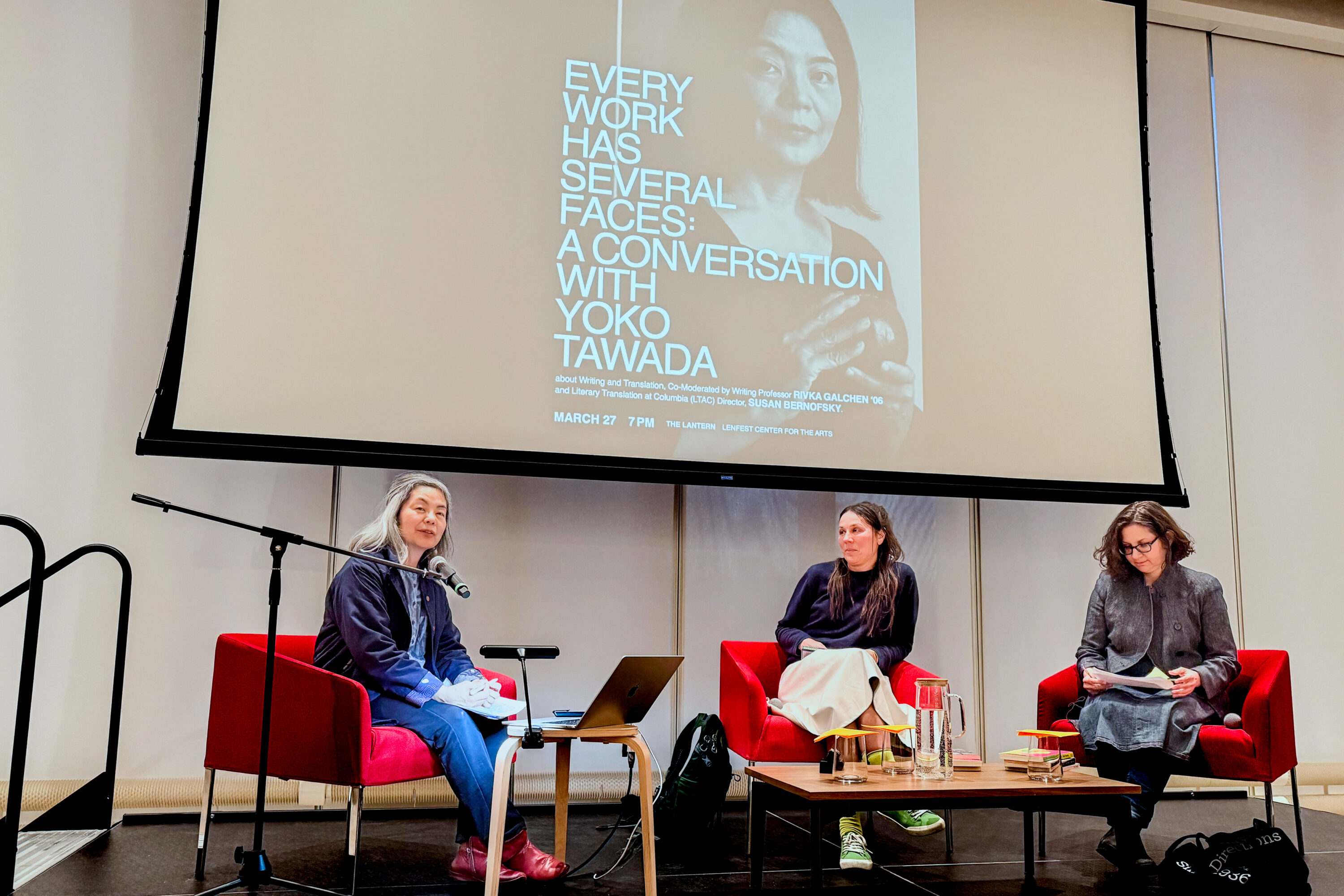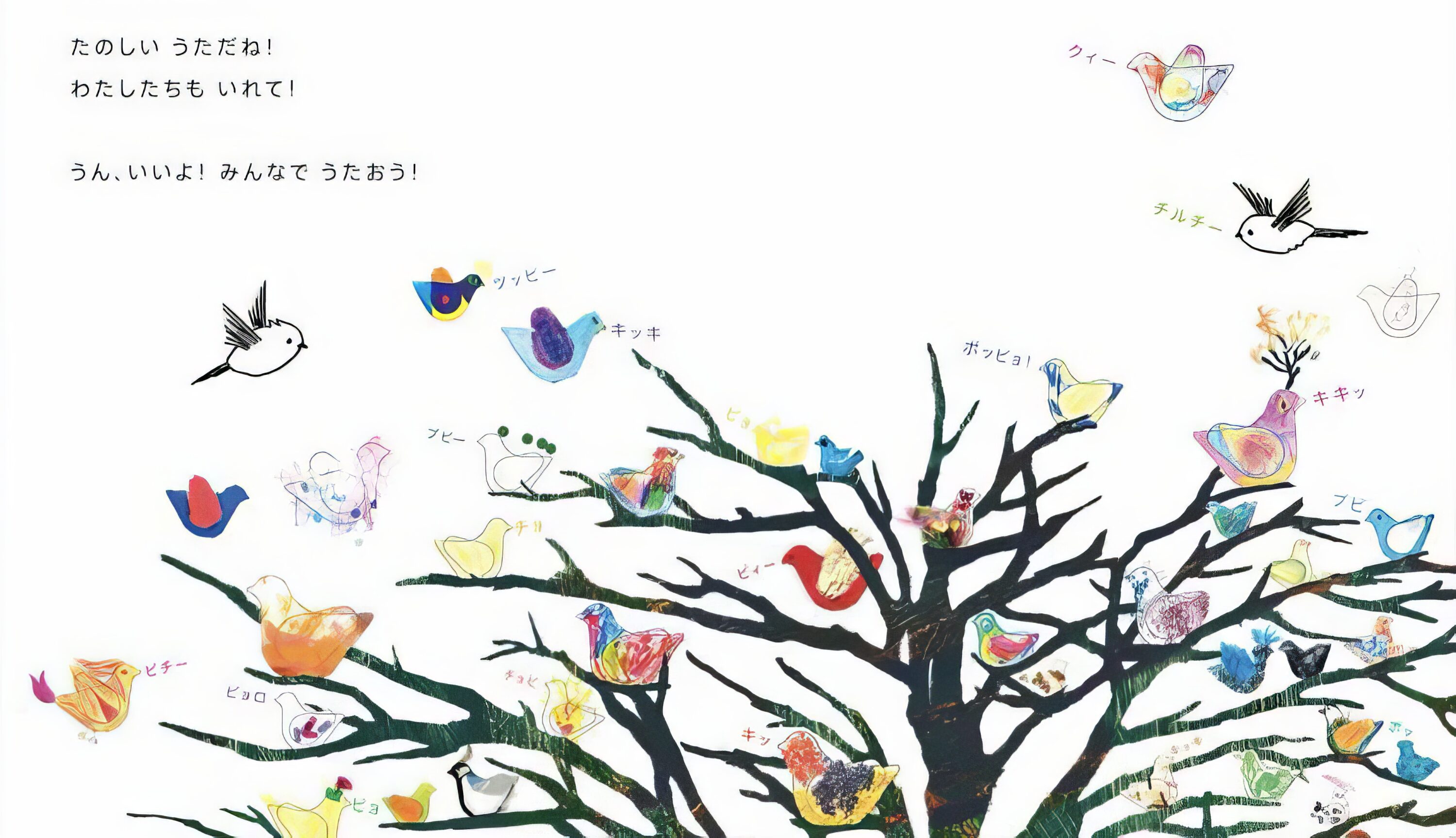This post is also available in:
日本語 (Japanese)
[et_pb_section fb_built=”1″ fullwidth=”on” _builder_version=”4.24.2″ _module_preset=”default” global_colors_info=”{}”][et_pb_fullwidth_post_title _builder_version=”4.24.2″ _module_preset=”default” global_colors_info=”{}”][/et_pb_fullwidth_post_title][/et_pb_section][et_pb_section fb_built=”1″ _builder_version=”4.16″ global_colors_info=”{}”][et_pb_row _builder_version=”4.16″ background_size=”initial” background_position=”top_left” background_repeat=”repeat” global_colors_info=”{}”][et_pb_column type=”4_4″ _builder_version=”4.16″ custom_padding=”|||” global_colors_info=”{}” custom_padding__hover=”|||”][et_pb_text _builder_version=”4.24.2″ background_size=”initial” background_position=”top_left” background_repeat=”repeat” hover_enabled=”0″ global_colors_info=”{}” sticky_enabled=”0″]
Maya Keren‘s five-piece band Careful in the Sun is about to embark on its first mini tour, with support from CRS, and I reached out to Maya to learn more about their music and vision, which fuses elements of jazz and pop and draws inspiration from black queer liberation literature.
March 12, 2024 — Rhizome, Washington DC, with m.cole and Weed Tree
March 13, 2024 — Old Major, Baltimore, MD, with Julien Chang and Nico Wohl
March 14, 2024 — Fire Museum Presents, Philadelphia, PA, with sinonó and Dan Blacksberg
March 17, 2024 — Public Records, Brooklyn, NY, with Claire Dickson and Eliana Glass
I first saw them in June 2022 at the M³ Festival, produced by Mutual Mentorship for Musicians. While still an undergrad at Princeton University, Maya (they/them) had participated in M³’s first cohort of duo commission grantees back in the summer of 2020. In this concert, Maya led the band from the piano, and I was struck by their dreamy sound, camaraderie, and joie de vivre onstage. I found myself exhaling, expanding, drawn in and drawn inward. I softened.
Maya had just graduated from Princeton. Soon after, they moved to Brooklyn. Later that year I saw them play a solo voice-guitar/keyboard set at a Concert for Reproductive Rights. Maya was still able to create the same warm environment in which the audience members could relax, lean in, and dream together.
[/et_pb_text][et_pb_image src=”https://onlylove.art/wp-content/uploads/2024/03/DSC06375.jpg” alt=”Maya Keren, Concert for Reproductive Rights, 8/27/22″ title_text=”Maya Keren, Concert for Reproductive Rights, 8/27/22″ admin_label=”photo of Maya Keren, Concert for Reproductive Rights, 8/27/22″ _builder_version=”4.24.2″ _module_preset=”default” enable_caption_text=”on” global_colors_info=”{}”][/et_pb_image][et_pb_text _builder_version=”4.24.2″ background_size=”initial” background_position=”top_left” background_repeat=”repeat” global_colors_info=”{}”]
Since then I’ve seen Careful in the Sun play twice more — once in the White Room at CRS in Manhattan where I presented them as part of the Crossing Boundaries Concert Series and once at Sister’s in Brooklyn, and my appreciation for them has continued to grow.
According to the band’s web page, “Careful In The Sun traverses a verdant landscape of improvisation grounded in loops and songs by Maya Keren. The collective (Eliza Salem on drums, Anna Abondolo on fretless bass and voice, Emmanuel Michael on electric guitar, and Maya Keren on piano and voice) finds their center in lush harmonies and cathartic hooks underlaid with the strange and spontaneous logic of dreams.”
This is accurate, but it only begins to tell their story. Their material does not fall easily into one category. Lush pop harmonies co-exist with improvisational instrumental solos, and the vocals often melt into the soundscape so that the lyrics are difficult to make out. Sonic and lyrical themes gently float in and out, return, morph, as in a dream. One loses track of where one song ends and another begins. It’s jazzy, but theirs is a distinctly non-hierarchical way of collaborating and transforming the energy of the room — environing, to use Maya’s word, which invites the listener to enter, float, ruminate, visualize, soften.
[/et_pb_text][et_pb_image src=”https://onlylove.art/wp-content/uploads/2024/03/DSC07813.jpg” alt=”Eliza Salem (drums) & Anna Abondolo (fretless bass), 1/28/23 at CRS” title_text=”Eliza Salem (drums) & Anna Abondolo (fretless bass), 1/28/23 at CRS” admin_label=”photo of Eliza and Anna” _builder_version=”4.24.2″ _module_preset=”default” enable_caption_text=”on” global_colors_info=”{}”][/et_pb_image][et_pb_text _builder_version=”4.24.2″ background_size=”initial” background_position=”top_left” background_repeat=”repeat” global_colors_info=”{}”]
With a band of musicians this young, growth and change are to be expected, and this band is already stretching. Maya, who has lately been playing some duo shows with Emmanuel as well as more solo sets on piano and guitar, is already experimenting with bringing in their guitar as well as some new material. But while the songs and arrangements may evolve and diversify, their approach and their vision remain the same.
Before exploring their material and vision more deeply, I’d like to share a bit about how it came to be. Maya grew up singing in choir and studying western classical piano under protest at the insistence of her mother. Around age 13, their piano teacher suggested that Maya might enjoy playing some jazz tunes, igniting a passion within them. From then on Maya loved playing piano. Improvisation became a vital practice in which Maya could find joy and feel at home, and they soaked up as much traditional jazz history and technique as possible.
At Princeton Maya went on to perform in numerous ensembles including an indie band. They majored in music, studying under renowned professors such as Kris Davis and Angelina Sanchez who introduced Maya to more contemporary developments in jazz, free jazz and electronics, noise and new music. Maya also founded and led the Jazz and Creative Music Club at Trenton High School, earned a certificate in African-American Studies, and explored various traditions of community gathering. When the pandemic forced everyone to isolate, Maya began thinking deeply about the role of community in healing and the role of music in community.
[/et_pb_text][et_pb_image src=”https://onlylove.art/wp-content/uploads/2024/03/DSC01118.jpg” alt=”Maya Keren at Sisters, 12/3/23″ title_text=”Maya Keren at Sisters, 12/3/23″ admin_label=”photo of Maya Keren at Sisters” _builder_version=”4.24.2″ _module_preset=”default” enable_caption_text=”on” global_colors_info=”{}”][/et_pb_image][et_pb_text _builder_version=”4.24.2″ background_size=”initial” background_position=”top_left” background_repeat=”repeat” global_colors_info=”{}”]
In a 2020 interview during their Trenton Arts in Princeton Fellowship, Maya shared this message to young people around the world: “You don’t have to be anything that someone tells you to be, or that you feel society expects of you. What you find beautiful and what resonates with you is meaningful, and your honest voice is potent and sublime. You and your art are powerful. You have the capacity for enormous change.” Out of the challenging isolation of the pandemic, Maya came to realize that to fully know and express our truth and feel whole, we need to connect with others, safely and authentically.
Weaving together threads from all of their experiences with music, black/queer liberation, and environing, Maya began reaching out to Anna, Eliza, and Emmanuel, musical friends from different contexts who also had backgrounds and interests both in and outside jazz but had never played together as a group. Each of them had struggled in their way with the disruptions of the pandemic and welcomed the opportunity to explore how they might create a musical environment together in which they could find refuge and offer healing to one another. They could all identify with the comfort that the more predictable structures of folk songs and other types of popular songs offered at this moment, and so Maya began writing for them, composing short loops on the piano, little harmonic progressions, bits of lyrics and melodies, options for melodies, rhythms, and later the skeletons of full songs. Maya invited the other band members to improvise with these elements, re-arrange them, harmonize, drawing on their own musical backgrounds to come up with their own parts and solos.
During this time, Maya was also gaining experience in being a bandleader while simultaneously a collaborator, in learning how to notice and articulate what they did or did not like, how to encourage or ask for something different with love and without compromising the principle of providing mutual care and respect that they were seeking to establish. They very much wanted to practice what they were preaching and, I believe, to trust that this practice would color the music and transmit to listeners.
[/et_pb_text][/et_pb_column][/et_pb_row][et_pb_row column_structure=”1_3,1_3,1_3″ _builder_version=”4.24.2″ _module_preset=”default” global_colors_info=”{}”][et_pb_column type=”1_3″ _builder_version=”4.24.2″ _module_preset=”default” global_colors_info=”{}”][et_pb_image src=”https://onlylove.art/wp-content/uploads/2024/03/DSC03768.jpg” admin_label=”photo of Eliza” _builder_version=”4.24.2″ _module_preset=”default” enable_caption_text=”on” global_colors_info=”{}”][/et_pb_image][/et_pb_column][et_pb_column type=”1_3″ _builder_version=”4.24.2″ _module_preset=”default” global_colors_info=”{}”][et_pb_image src=”https://onlylove.art/wp-content/uploads/2024/03/DSC01129.jpg” admin_label=”photo of Emmanuel Michael” _builder_version=”4.24.2″ _module_preset=”default” enable_caption_text=”on” global_colors_info=”{}”][/et_pb_image][/et_pb_column][et_pb_column type=”1_3″ _builder_version=”4.24.2″ _module_preset=”default” global_colors_info=”{}”][et_pb_image src=”https://onlylove.art/wp-content/uploads/2024/03/DSC01111.jpg” alt=”Anna Abondolo, Sister’s 12/3/23″ title_text=”Careful in the Sun & Tilt at Sisters, 12/3/23″ admin_label=”photo of Anna” _builder_version=”4.24.2″ _module_preset=”default” enable_caption_text=”on” global_colors_info=”{}”][/et_pb_image][/et_pb_column][/et_pb_row][/et_pb_section][et_pb_section fb_built=”1″ _builder_version=”4.24.2″ _module_preset=”default” global_colors_info=”{}”][et_pb_row _builder_version=”4.24.2″ _module_preset=”default” global_colors_info=”{}”][et_pb_column type=”4_4″ _builder_version=”4.24.2″ _module_preset=”default” global_colors_info=”{}”][et_pb_text _builder_version=”4.24.2″ background_size=”initial” background_position=”top_left” background_repeat=”repeat” hover_enabled=”0″ global_colors_info=”{}” sticky_enabled=”0″]
What they developed is something like a library of sonic nodes, distinct but related, as if from the same palette, any of which could be called up interchangeably, as if they were simply moving from room to room within a big house. Maya said that they sought to become so familiar with these nodes that “we can just not make a set list, not do anything. Just walk into the show. Someone starts playing a melody. We join in. You know, another person queues another node that we both know. Suddenly that cuts to a song that we all know. Then, someone’s improvising, and then another. It’s kind of like it’s not just a band playing a set of songs, but rather like this language we’ve all learned to speak or like this way we’ve all learned to weave together and we can use that link to inhabit this world.” And the goal is for this language to be supple enough to allow them to express where they are and what they are feeling at any given moment while still sounding like they are speaking the same language, inhabiting the same world.
[/et_pb_text][et_pb_image src=”https://onlylove.art/wp-content/uploads/2024/03/DSC07746.jpg” alt=”Crossing Boundaries 19: Careful in the Sun, CRS 1/28/23″ title_text=”Crossing Boundaries 19: Careful in the Sun, CRS 1/28/23″ admin_label=”photo from Crossing Boundaries 19: Careful in the Sun, CRS 1/28/23″ _builder_version=”4.24.2″ _module_preset=”default” enable_caption_text=”on” global_colors_info=”{}”][/et_pb_image][et_pb_text _builder_version=”4.24.2″ background_size=”initial” background_position=”top_left” background_repeat=”repeat” global_colors_info=”{}”]
Paying tribute to and connecting with the lineage of African-American/queer liberation poets whose words have always sung alongside the sounds of jazz makers, Maya offered a band name taken from a phrase from the Gwendolyn Brooks’ poem “In the Mecca”: “gargantuan gardens careful in the sun” transforms the Mecca tenement building’s modest array of windowsill plants, stretching to catch the fleeting rays of sun streaming between crowded-together rooftops, into a “gargantuan garden” symbolizing the building residents’ carefully nurtured outsize dreams — of freedom, equality, love — and their strivings for emotional/spiritual warmth.
Maya’s lyrics also explore the dichotomy of outer and inner, of life as it is and life as it could be, and the need for an environment that allows one the safety to explore one’s limitless inner spaces and connect with others authentically. And just as in Brooks’ poems, there are many references to light in Maya’s lyrics. For instance, their song “Kitchens” begins,
Are you ready? We’re feeling good.
I’m walking through purple light.
I’m hiding from the sun
brimming with all the things I never say.
Feeling good…while hiding. In the light…while hiding from it. Full of thoughts…not spoken. Freedom cascades through these contradictions. Freedom to wander, freedom to experience, freedom to keep to oneself, freedom to enjoy one’s own self. Freedom flows through the playing of each of the musicians, gently echoing and reinforcing the lyrics and the feeling of feeling good. If you listen closely, you might hear an anthem of sorts but not the kind you’re used to. These songs forsake booming demands for quiet affirmation, aggression for introspection. They’re circular, immersive, hypnotic.
[/et_pb_text][et_pb_video src=”https://www.youtube.com/watch?v=hBFxJTovgVQ” _builder_version=”4.24.2″ _module_preset=”default” global_colors_info=”{}”][/et_pb_video][et_pb_text _builder_version=”4.24.2″ _module_preset=”default” global_colors_info=”{}”]
In the midst of the multi-national corporate takeover of the commercial music industry, which seems to focus with ever more soulless efficiency on extracting as much wealth as possible through the commodification of as few artists as possible, many artists young and old are left out in the cold and are pursuing alternative avenues for sharing live music as a fundamentally unique and healing exchange. And despite the ever-growing plethora of entertainment options placed before us, I think people still crave experiences where they can see themselves reflected in others and be seen and heard and recognized for who they truly are. Live music has always offered a pathway to freedom, but all we’ve known for so long is patriarchy and everything is colored by that. We’re still under patriarchy, but every day is a new day. People like Maya are at least conjuring these fleeting visions of something different.
As Careful in the Sun — as well as other artists who are committed to making space for more non-hierarchical and inclusive conceptions of environing — plays more shows, I believe that more and more people will recognize how life-affirming and empowering and needed this approach is. But even if you don’t know about all that and just come for the music, you’re still bound to leave feeling good.
[/et_pb_text][et_pb_video src=”https://www.youtube.com/watch?v=o6oSIuJvjF0&t=12s” _builder_version=”4.24.2″ _module_preset=”default” global_colors_info=”{}”][/et_pb_video][/et_pb_column][/et_pb_row][/et_pb_section]

